Trauma Therapy
Our trauma therapists in Cincinnati and Indianapolis are ready to help.
We Can Help You With Trauma
Trauma is an experience of being overwhelmed by threats such as natural disasters, death, abuse, combat, injury, or assault . When your natural coping mechanisms are overrun by what you’re experiencing — physically or mentally — your body does what it can to protect you. This includes responses like emotional numbing or keeping you in a state of alertness. It is natural to have these reactions to trauma, but sometimes the effects of trauma linger, causing anxiety, trouble sleeping, and intrusive thoughts that can interfere with daily activities. When this happens, you may be living with a trauma-related disorder. This guide explains trauma disorders and the treatments that can help you thrive.
Trauma Disorders
Adjustment
- Marked emotional or
behavioral distress in
response to an
identifiable stressor - Significant
impairment in social,
occupational, or other
important areas of
functioning - May include
depressed mood,
anxiety, or behavior
problems
Acute Stress
- Exposure to traumatic event(s) (actual or threatened)
- Anxiety response that includes some form of reexperiencing of or reactivity to the traumatic event(s)
- Symptoms present at least three days and can persist for up to one month after the event
- When symptoms persist past one month, this may indicate the development of post traumatic stress disorder
Posttraumatic Stress
- Exposure to one or more traumatic events
- Intrusive memories, dreams, flashbacks, physical sensations, or psychological distress
- Persistent avoidance of activities, places, or physical reminders
- Negative changes in cognitions and mood linked to the event
- Marked alterations in arousal and reactivity
- Symptoms present at least one month after exposure to traumatic event
Effective Treatments for Trauma Disorders
Cognitive Behavioral Therapy (CBT)
- Re-evaluate thinking patterns and assumptions in order to identify unhelpful patterns
- Reconceptualize your understanding of the traumatic experiences, as well as your understanding of your ability to cope
Cognitive Processing Therapy (CPT)
- Challenge and modify unhelpful beliefs related to the trauma
- Create a new understanding and conceptualization of the traumatic event to reduce ongoing negative effects
Prolonged Exposure Therapy (PET)
- Process traumatic experiences in a controlled and safe environment
- Learn that the trauma-related memories and cues are not dangerous and do not need to be avoided
Eye Movement Desensitization and Reprocessing (EMDR)
- Use bilateral stimulation (typically eye movements), reduce the vividness and emotion associated with the trauma memories
Narrative Exposure Therapy (NET)
- Recognize and create an account or testament of what happened, in a way that serves to process trauma, recapture self-respect, and acknowledge human rights
Take the Next Step with Support fro Trauma

We want to help you create an individualized roadmap (a ThriveMap!) to get CLEAR DIRECTION on how you can achieve your goals and overcome your challenges.
1
Understand the Problem
2
Choose Treatment Targets
3
Create an
Action Plan
Frequently Asked Questions About Trauma Therapy
What is it like to work with our trauma therapists in the Indianapolis and Cincinnati areas?
We believe the connection with your therapist and having clear guidance about the treatment and therapeutic process are critical for a great therapy experience, that’s why we promise our clients Remarkable Connection and Clear Direction. Your unique needs and expectations matter to us as we work together to help you accomplish your goals. Here’s a snapshot of the ThrivePointe experience.

1. Build a Strong Therapeutic Relationship
Team up with a therapist who strives to deeply understand your experience and expertly guide you through the process of making changes.

2. Understand the Problem
Develop a clear picture of your problem, including your personal history, symptoms, triggers, and the ways your life is impacted.

3. Create an Action Plan
Using evidence-based approaches, design an individualized plan to achieve your goals.

4. Implement New Skills & Solutions
Get the right balance of support and challenge to make life and relationship changes.

5. Track Your Progress To Do What Works
Make sure therapy is helping by monitoring improvements and refining your action plan.

6. Achieve Your Goals
Experience the Satisfaction of working hard to see positive changes and growth in your life!
A traumatic event isn’t over when it’s over. And for many, their experiences of trauma are seemingly small and repeated, causing harm over and over again. Natalie can help you name these experiences in a way that gives them coherence, helping you connect the sensory experiences that are triggered. Triggers can evoke emotions, body sensations, shortness of breath, a racing heart, or tightness in your body that pop up and pull you back into those old moments of threat even years after the real threat has passed. In therapy you can go at a pace that feels safe for you and get support to process not only the traumatic memory, but also understand the traumatized brain and how your symptoms helped you to survive. There are several effective approaches for helping your body move forward so you aren’t re-experiencing the trauma as though it is happening in the present. Natalie takes time to collaborate with you so the approach feels safe and understandable. You might use EMDR to reprocess a traumatic memory to help move your body and beliefs toward relief and adaptive thoughts about yourself, others, and the world. As you do, you won’t need to rely heavily on coping strategies or avoidance to find moments of peace. You will be clearing a new path for yourself that includes peace, resilience, and a hopeful future.
What does trauma counseling look like?
Trauma therapy can integrate several helpful modalities to flexibly attend to your needs and readiness. This roadmap (Fisher, 2021) highlights important aspects of trauma therapy.
- Identifying your trauma symptoms (past and present).
- Reflecting on how your symptoms and coping strategies helped you survive.
- Learning about how the brain is impacted by trauma and how the brain remembers trauma.
- Recognizing triggers and what is triggering.
- Learning to differentiate the past from the present (current danger vs safe but triggered).
- Learning about how the nervous system defends us (fight, flight, freeze).
- Processing experiences in and outside your window of tolerance (hyperarousal, hypoarousal, and window of tolerance).
- Uncovering destructive patterns of coping, and learning ways to break the cycle.
- Understanding trauma’s impact on ways of viewing and relating to yourself and others.
- Noticing your reactions to closeness and distance and attachment patterns.
- Support with dissociation and grounding.
- Strengthening “C” qualities such as curiosity, compassion, calmness, clarity, creativity, courage, confidence, and connection.
Want to Learn More About Trauma Therapy
in Ohio or Indiana?
We want to make finding trauma counseling in Cincinnati and Indianapolis easy.
To get started with a trauma therapist, just follow these three steps:
- Find a therapist on our Team page.
- Call 833-914-4688 to make an appointment.
- Start making progress on your goals!
More ThrivePointe Counseling Services Near Cincinnati and Indianapolis
As a practice, we value treating the whole family’s needs. So, at our various ThrivePointe locations in Indianapolis, Greenwood, Blue Ash and Liberty Township, we can serve you. We provide adult counseling, couples counseling, child counseling and play therapy, teen counseling, family counseling and Christian counseling. Our team cares about you and wants to be a part of your thriving life. Learn more and call us today!

